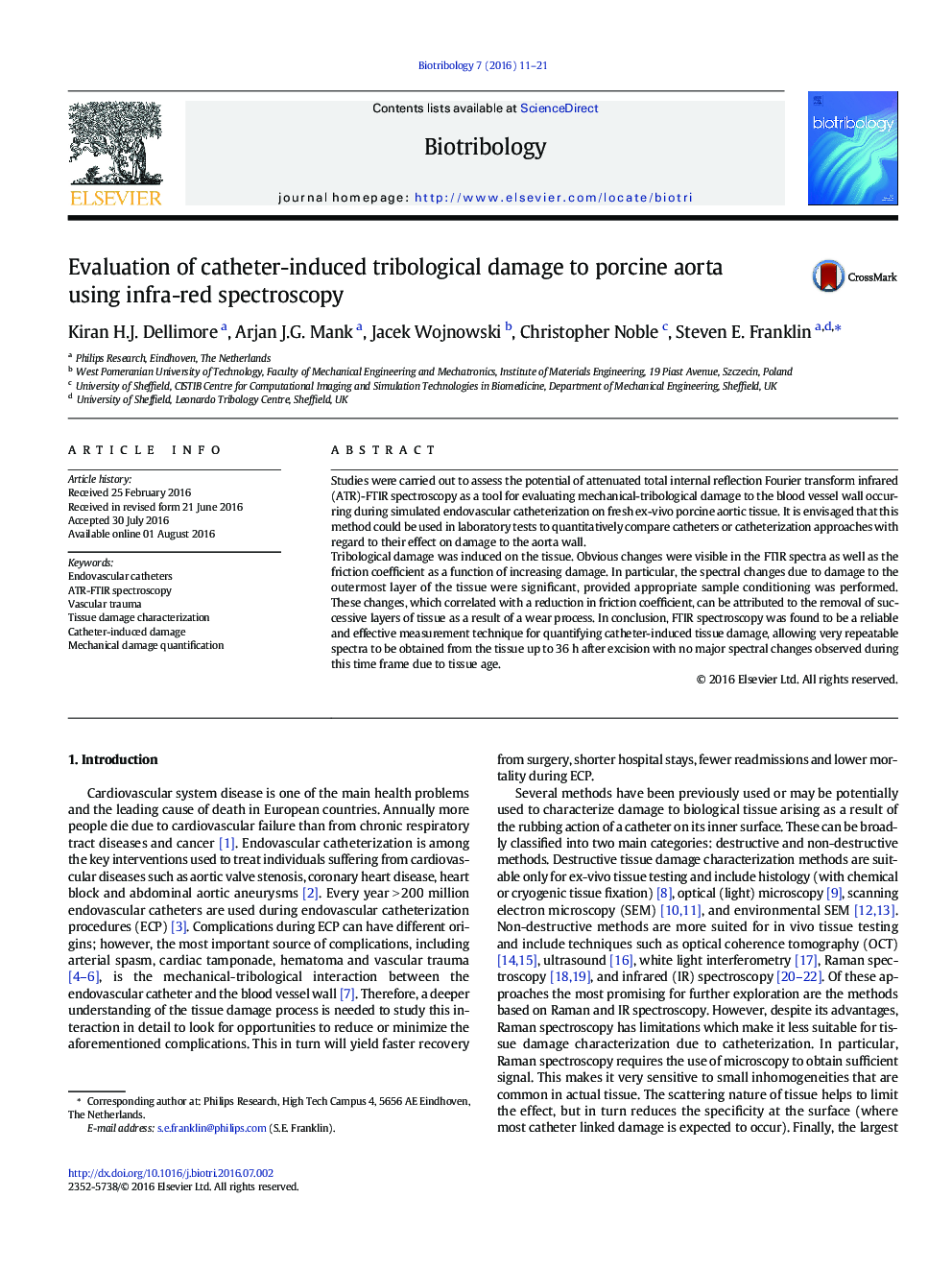| کد مقاله | کد نشریه | سال انتشار | مقاله انگلیسی | نسخه تمام متن |
|---|---|---|---|---|
| 756848 | 1462451 | 2016 | 11 صفحه PDF | دانلود رایگان |
• Damage to the aorta wall during endovascular catheterization is a growing concern to the medical community.
• Endovascular catheterization was simulated by controlled rubbing of catheter tips on fresh ex-vivo porcine aorta.
• ATR-FTIR spectroscopy was used to evaluate the tribological damage to the tissue.
• Such tests and evaluation could be used in the laboratory to quantitatively compare catheters or catheterization approaches.
Studies were carried out to assess the potential of attenuated total internal reflection Fourier transform infrared (ATR)-FTIR spectroscopy as a tool for evaluating mechanical-tribological damage to the blood vessel wall occurring during simulated endovascular catheterization on fresh ex-vivo porcine aortic tissue. It is envisaged that this method could be used in laboratory tests to quantitatively compare catheters or catheterization approaches with regard to their effect on damage to the aorta wall.Tribological damage was induced on the tissue. Obvious changes were visible in the FTIR spectra as well as the friction coefficient as a function of increasing damage. In particular, the spectral changes due to damage to the outermost layer of the tissue were significant, provided appropriate sample conditioning was performed. These changes, which correlated with a reduction in friction coefficient, can be attributed to the removal of successive layers of tissue as a result of a wear process. In conclusion, FTIR spectroscopy was found to be a reliable and effective measurement technique for quantifying catheter-induced tissue damage, allowing very repeatable spectra to be obtained from the tissue up to 36 h after excision with no major spectral changes observed during this time frame due to tissue age.
Journal: Biotribology - Volume 7, September 2016, Pages 11–21
